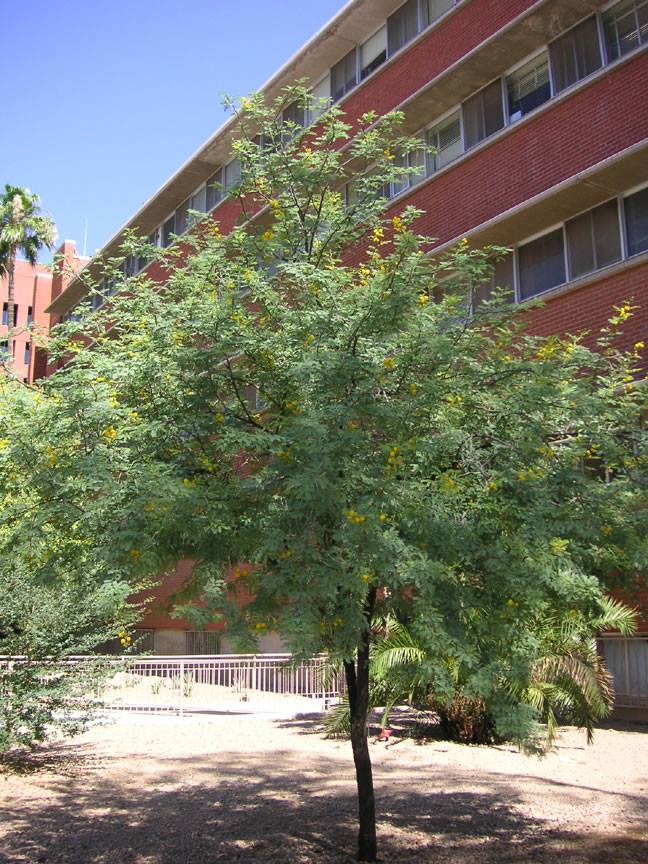
An African native, the karroo does well here in the desert climate, especially in clay-loam soils. Its leaves closely resemble that of a mesquite, but its yellow puffball flowers are a tell-tale sign that it’s of the Acacia family. Its long white spines grow up to 3 inches long and are meant to deter herbivores, but they also make them a popular tree for birds to nest in. It can grow up to 3 feet a year and in prime conditions can reach up to 50 ft in height. In its native region of South Africa, it has developed many traditional uses. These include using the shaggy bark to make rope, the pods as animal feed, the hard wood for carving, and a variety of medicinal uses. There is only one of these on campus on the Southeast corner of the PAS building. Be sure to check it out!

